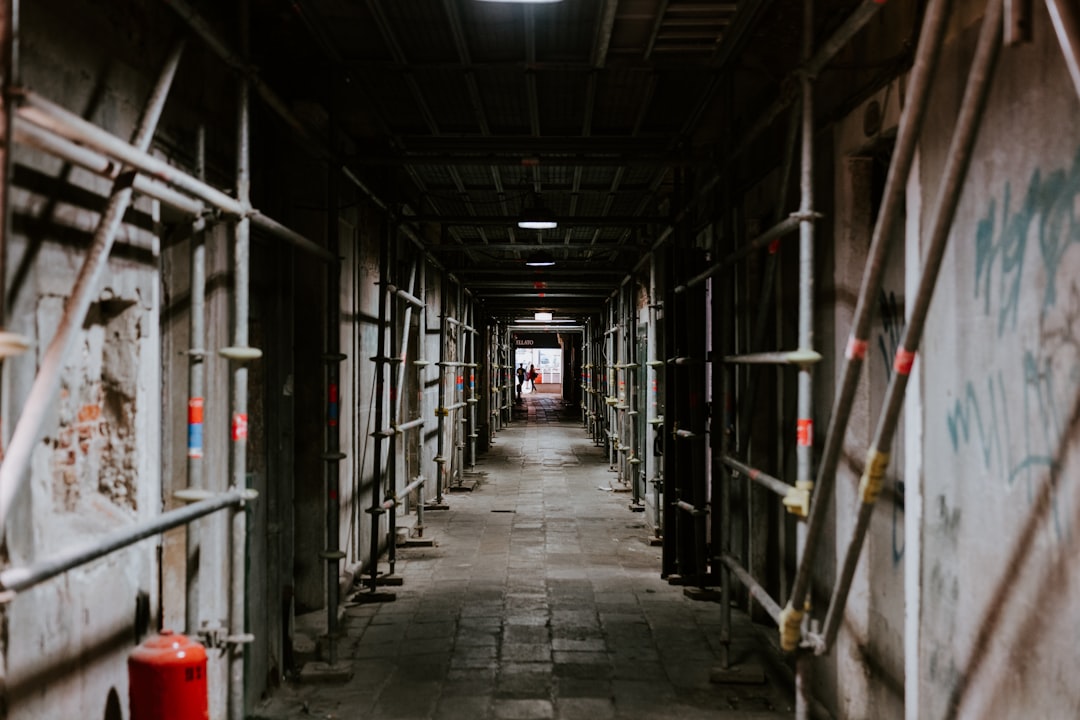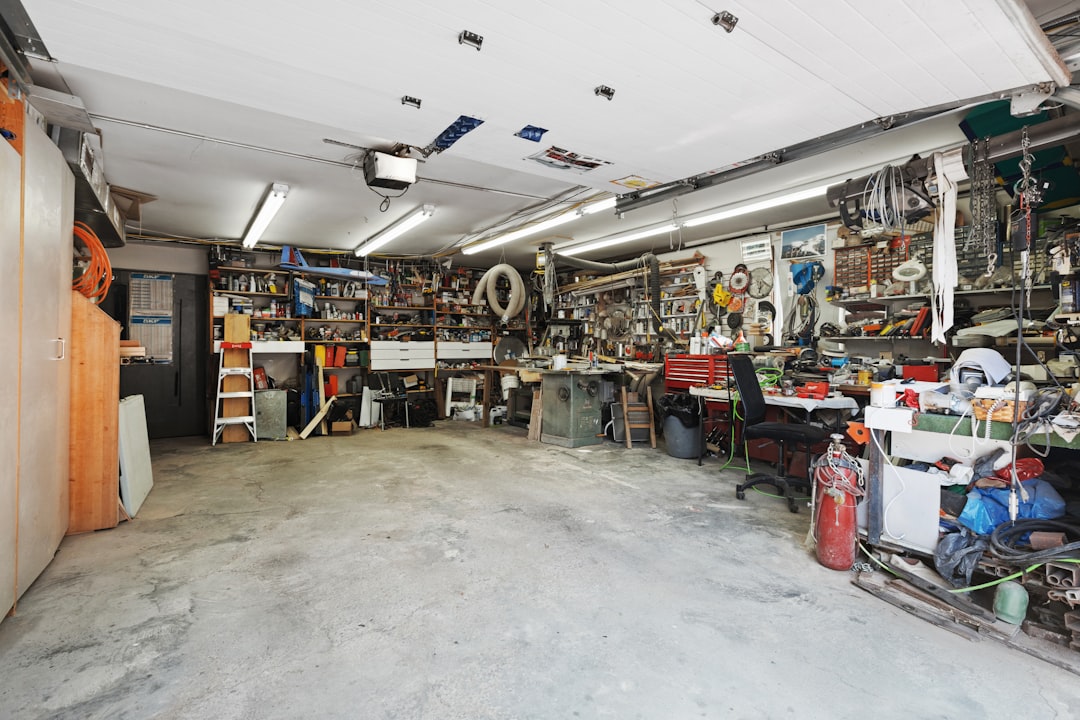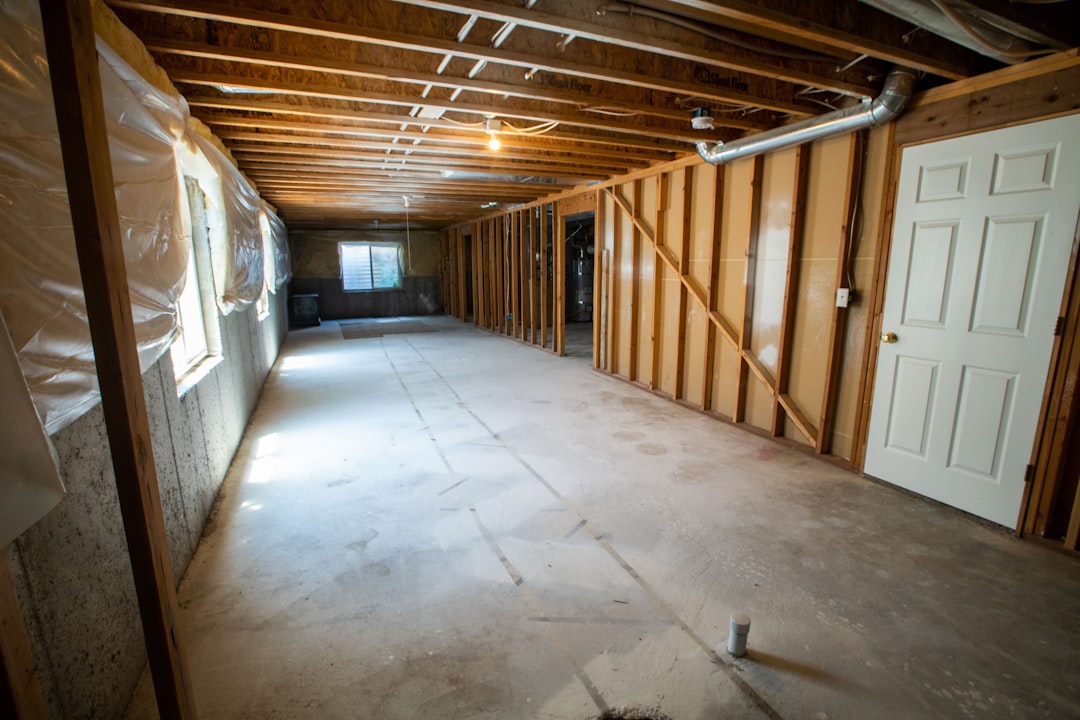

Engage prospects with a scan and streamline customer engagement with FREE QR code marketing tools by Sona – no strings attached!
Create a Free QR CodeFree consultation

No commitment

Engage prospects with a scan and streamline customer engagement with FREE QR code marketing tools by Sona – no strings attached!
Create a Free QR CodeFree consultation

No commitment
Today’s digitally driven home improvement market puts basement remodeling contractors under constant pressure to stand out, capture high-intent leads, and prove ROI for every marketing dollar. While traditional outreach methods like brochures, direct mail, and event signage can help, they often leave a disconnect between offline interest and digital conversions, causing some high-potential prospects to remain untracked or missed entirely.
QR codes are quickly bridging this gap, offering homeowners a seamless way to turn a moment of curiosity into real engagement, whether it is discovering basement remodeling ideas, booking a design consultation, or reading Google reviews. With just one scan, potential customers can explore informative content, compare remodeling costs, or submit project details, which streamlines the buyer journey and gives contractors enhanced insight into audience intent.
By strategically placing QR codes across all touchpoints, basement remodeling contractors remove barriers to action and gain valuable data that was previously uncaptured. This allows them to identify which marketing efforts drive the most conversions, fill CRM gaps, and retarget potential clients who might otherwise remain anonymous. This guide explains how to use QR codes to drive conversions, improve engagement, and unlock measurable value for your business.

Basement remodeling contractors are using QR codes to transform print collateral, retail signage, and in-home consultations into interactive touchpoints that accelerate lead capture and qualification. The typical friction points are familiar: interested homeowners do not fill out paper forms at events, business cards get misplaced, and direct mail prompts interest without an easy path to learn more or book a visit. QR-enabled experiences replace these analog bottlenecks with instant, mobile-first actions.
By moving from paper-based processes to digital flows, you can eliminate manual data entry, reduce drop-off, and create trackable moments that connect directly to your CRM and marketing automation. The key is to align each QR code to a specific business objective, such as booking a consultation, capturing project parameters, or gathering reviews. With modern platforms like Sona QR, you can also automate follow-up and analyze performance across channels.
Modern platforms can automate both QR deployment and the integration of scanning behavior into your marketing stack. That means fewer leads slip through the cracks, less time spent on manual tasks, and a clearer line of sight from offline engagement to revenue. Start creating QR codes for free.

Basement remodeling contractors often struggle with invisible offline engagement. A homeowner might take your brochure or snap a photo of a truck wrap, yet there is no immediate way to convert that curiosity into an inquiry. QR codes solve this problem by reducing friction and illuminating previously anonymous interactions. When a homeowner scans a code on a brochure, yard sign, event display, or door hanger, you gain a measurable indicator of interest and can invite a next step such as viewing a gallery or booking a consultation.
Dynamic QR codes add even more value. If you need to update a seasonal promotion, refresh your best project showcases, or test new calls to action, you can change the destination without reprinting materials. Analytics show which placements and messages drive inquiries, which helps you refine spend and demonstrate ROI. Over time, this visibility enables a smarter marketing mix that prioritizes the placements and creatives that close business in your local markets. See qr code marketing for examples.
Selecting the right QR format ensures that each scan drives the intended action. For contractors, the most useful types focus on mobilizing contact, qualification, and social proof, while remaining flexible as offers change.
Dynamic codes are ideal for promotions, galleries, and forms where you might update content or run A/B tests over time. Static codes work for stable assets like vCards or always-on FAQ pages. With Sona QR, you can manage both in one dashboard, update destinations instantly, and monitor performance without asking your print vendor for new runs.

For basement remodeling contractors, many potential leads disappear because there is no systematic way to capture interest at key moments or locations. QR codes transform traditional materials into measurable lead sources and let you attribute results by neighborhood, channel, or creative. The goal is to place codes where homeowners are naturally evaluating possibilities, then guide them to a mobile action that matches their intent.
Think about your local marketing footprint and the buyer journey. A homeowner may first notice your brand on a neighbor’s yard sign, see your booth at a home show, receive a mailer, and then check your portfolio online. QR codes at each step give you a consistent way to capture engagement and move prospects forward with confidence. For broader strategy, explore digital marketing for contractors.
With codes at these touchpoints, contractors can identify decision-makers earlier and follow up before interest fades. Over time, your analytics will reveal which placements consistently produce high-intent scans and which should be reworked or retired.

The most effective QR use cases map directly to common homeowner interactions and the information they need to feel confident moving forward. By aligning codes to the buyer journey, you reduce friction and capture stronger signals of intent.
Successful campaigns typically blend inspiration, education, and action. For example, a prospect might scan a flyer at a home show to browse a gallery, then scan a truck wrap near their home to estimate budget, and later scan a leave-behind card to schedule a design consult. Each scan informs your follow-up, while giving the homeowner exactly what they need next.
You can expand these use cases with specialized flows like warranty registration, financing pre-qualification, or post-project maintenance guides. Each use case should have a clear owner and follow-up process to ensure every scan progresses the relationship.
It is easy to waste ad spend if you cannot tell who is serious, who is early in research, and who needs a nudge to book. Every QR scan provides context that helps you separate curiosity from intent. When you tag codes by placement, message, and content type, you can segment audiences automatically and create personalized nurture streams that convert. Sona is an AI-powered marketing platform for identity, attribution, and activation. See Sona’s retargeting playbook for tactics.
Begin by mapping scans to buyer stages: awareness, consideration, and decision. Then use engagement depth to refine. Someone who scans a yard sign and views two gallery pages might be early stage, while a scanner who completes a budget calculator and checks financing information is close to conversion. Sync these signals to your CRM to trigger the right next action.
With advanced platforms like Sona QR, you can enrich contact records with scan metadata, prioritize outreach by intent score, and automate nurture programs based on real behavior rather than assumptions. The result is a leaner funnel with fewer dead ends and more qualified conversations.
Most contractors run a blend of offline and online campaigns, yet the connection between them often remains weak. QR codes act as the bridge, turning static materials into interactive experiences and making every surface measurable. By standardizing how you deploy, track, and follow up on QR scans, you can run multi-channel programs that feel cohesive to the homeowner and accountable to your team.
Start by identifying your must-win channels for the season, such as spring home shows or neighborhood mailers, and build QR-enabled journeys that align with each channel’s context. A viewer watching a YouTube ad needs an easy way to take action from the couch, while a neighbor walking past a job site needs a scan that loads instantly and fits a quick moment on the sidewalk.
Automation makes the multi-channel experience actually work. Sona QR centralizes code creation, routing, and analytics, then syncs scan data to your CRM and ad platforms so campaigns can adapt in real time.
Missed follow-up, vague ROI, and manual tracking frustrate contractors using traditional marketing. A structured QR program solves these challenges by aligning every code to a clear objective and a repeatable workflow. Start with a single, high-impact campaign, then scale across your print, events, and job-site footprint as you see results.
Below is a baseline process you can run for seasonal promotions, event-driven outreach, or ongoing reputation building. Each step is designed to reduce friction for homeowners, maintain data accuracy, and link scans to revenue outcomes in your CRM.
Pick one goal with strong business value and simple execution, such as post-event appointment booking or converting job-site interest into consultations. Define the conversion action and the offer that earns the scan, for example, a free 20-minute design discovery call, an instant estimate range, or a limited-time upgrade on flooring.
Clarify the audience and the physical context. A code on a truck wrap should lead to a fast-loading page with a concise form and click-to-call, while a code on a brochure at a home show can route to a deeper gallery and an appointment calendar. Align the destination to the scanning moment.
Decide between static and dynamic. Static codes are fine for permanent assets such as vCards or evergreen FAQs. Dynamic codes are essential for campaigns that require updating destinations, tracking scans by placement, and running A/B tests. In most lead generation scenarios, dynamic codes provide the flexibility and analytics you need.
If you plan to segment by channel or neighborhood, create unique dynamic codes for each placement. With Sona QR, you can clone codes, set UTM parameters automatically, and manage all variations from one dashboard.
Design for visibility and clarity. Use your brand colors and a clear border around the code. Always pair the code with a benefit-driven CTA, for example, Scan to see before-and-after photos, Scan to get your instant estimate range, or Scan to schedule a free design consult. Include an icon or short line that indicates the action is mobile friendly.
Test scanning on multiple devices, distances, and lighting conditions. Validate that the landing page is mobile optimized, loads fast over cellular data, and keeps forms short. Confirm that analytics are recording scans, UTM parameters, and conversions before you print or deploy at scale.
Choose placements that match your growth plan and seasonality. For spring and summer, prioritize home shows, neighborhood mailers, and job-site signage. For fall and winter, emphasize direct mail, in-home consultation materials, and digital ads with QR overlays.
Label each deployment with a unique code for accurate attribution. Place codes at eye level where possible, ensure sufficient contrast, and keep nearby text minimal so the CTA stands out. For vehicles, position the code on the rear panel at a scannable size for walking traffic at the curb.
Monitor performance by code, placement, and audience. Compare scan-to-form and form-to-appointment conversion rates to understand where friction exists. Use heatmaps and scroll-depth data on landing pages to identify where prospects drop off.
Optimize iteratively. Test new CTAs, swap hero images, or rotate offers based on seasonality and audience response. With Sona QR, you can adjust destinations without reprinting, trigger automated follow-ups for scanners who do not book, and export reports that tie scans to pipeline influence and closed revenue.

A major challenge in contractor marketing is connecting tactics to actual revenue. Without a clean line from scan to appointment to proposal to contract, it is difficult to prioritize spend and defend budgets. Treat QR scans as measurable events that initiate a traceable buyer journey, and your analytics can finally tell you what works. Learn more in Sona’s offline attribution guide.
Start by recording each scan’s time, location, device, and channel. Then link scan sessions to downstream actions: form completes, calendar bookings, financing inquiries, and signed agreements. This multi-touch models view helps you understand how print, events, and signage collaborate with your digital channels to produce results.
Sona QR and Sona.com streamline this process. Sona QR captures the scan, enriches it with context, and syncs to your CRM. Sona.com connects scans to buyer journeys across website visits, ads, and email engagement, then attributes revenue to the touchpoints that mattered. The result is a closed-loop view from offline awareness to booked projects.
Contractors who treat QR codes as a strategic system instead of a one-off tactic see better and more predictable results. Your aim is not simply to collect scans, but to initiate structured journeys that lead to consultations and contracts. Consistency across assets, destinations, and follow-up will lift conversion rates and simplify operations. For more ideas, see these contractor marketing ideas.
Training your team is crucial. Estimators, project managers, and field crews should understand when and how to present QR-enabled materials, especially for reviews, referrals, and add-on services. Clear scripting and incentives help normalize scanning behavior for customers and staff.
Embedding QR codes into your marketing and daily operations connects you with today’s digitally savvy homeowners at their key moments of interest. It simplifies appointment scheduling and budgeting conversations, while giving you a transparent view of which strategies actually drive revenue. With advanced tracking, formerly invisible prospects become actionable leads, response times accelerate, and campaign ROI becomes clear even across complex, multichannel programs.
Top basement remodeling contractors are already using these data-driven engagement strategies to deliver faster responses, more tailored proposals, and measurable business impact. If you are ready to modernize your offline-to-online funnel, start with one high-intent use case, Start creating QR codes for free, and connect scans to your CRM. Refine quickly, scale what works, and turn every scan into a step closer to a signed contract.
QR codes have revolutionized the basement remodeling contractors industry by transforming traditional marketing materials into dynamic, measurable conversion tools. Whether it’s attracting new clients, enhancing customer interactions during consultations, or streamlining project follow-ups, QR codes enable instant access to portfolios, reviews, and booking systems—turning every offline touchpoint into a seamless digital experience. Imagine knowing exactly which flyers or signage lead to booked projects and being able to optimize your campaigns on the fly.
With Sona QR, you can easily create dynamic, trackable QR codes that update instantly without the need to reprint, giving you real-time insights into customer engagement and directly linking every scan to increased revenue. No more missed leads or guesswork—just smart, data-driven marketing that grows your business efficiently.
Start for free with Sona QR today and turn every scan into a new project, a loyal client, or your next big success.
Reputable basement remodeling contractors can be found by exploring local trade shows, home expos, online reviews via QR codes, and neighborhood referrals, as well as using platforms that provide verified reviews and portfolio access.
Basement remodeling project costs vary, but QR code-enabled digital portfolios and cost calculators can help homeowners explore detailed pricing information tailored to their project scope and location.
The latest trends include using dynamic QR codes to bridge offline and online marketing, enabling seamless engagement through mobile experiences, real-time review collection, automated lead tracking, and personalized follow-up campaigns.
QR codes transform print materials and signage into interactive touchpoints that accelerate lead capture, eliminate manual data entry, connect directly to CRMs, and provide measurable insights into customer intent and campaign performance.
Remodeling your basement can increase home value, create additional living space such as home theaters or in-law suites, improve functionality, and allow for personalized upgrades like moisture control and premium finishes.
Useful QR code types include web links to galleries and cost calculators, vCards for easy contact saving, form links for project assessments, promotions and coupons, and review collection links to boost social proof.
Effective QR code placements include local trade shows, door hangers, flyers, on-site signage, direct mail campaigns, remodel truck wraps, and digital ads to capture homeowner interest at various buyer journey stages.
Dynamic QR codes allow updating destinations without reprinting, enable A/B testing, provide detailed analytics by placement and message, and help refine marketing spend by showing which channels drive conversions.
By recording scan metadata such as time, location, and device, linking scans to CRM events like bookings and proposals, and assigning revenue to campaigns, contractors can obtain a closed-loop view from offline engagement to signed contracts.
Start by choosing a clear use case and audience, selecting static or dynamic QR codes, designing and testing codes for visibility and mobile-friendliness, deploying codes across key channels, then tracking and optimizing performance based on analytics.
Use Sona QR's trackable codes to improve customer acquisition and engagement today.
Create Your FREE Trackable QR Code in SecondsJoin results-focused teams combining Sona Platform automation with advanced Google Ads strategies to scale lead generation

Connect your existing CRM

Free Account Enrichment

No setup fees
No commitment required

Free consultation

Get a custom Google Ads roadmap for your business






Launch campaigns that generate qualified leads in 30 days or less.
